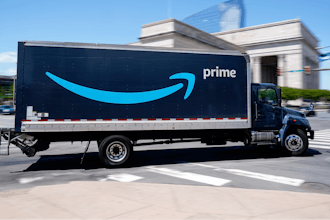E-commerce has been a boon for many retailers, opening up new markets and major sources of revenue. For industrial distributors, however, the reverse is more common. The majority of industrial distributors, in fact, have found e-commerce to be more of a frustration than a source of new revenue.
Distributors themselves readily admit they need help. Anna Wells, executive editor of Industrial Distribution noted in a recent webcast on the topic, “The Potential for Ecommerce in Industrial Distribution,” that only 7 percent of the distribution industry executives recently surveyed by Industrial Distribution consider their ecommerce sites to be “excellent.” In the same vein, while two thirds of the respondents say they sell online, 75 percent of those make less than 15 percent of their sales from e-commerce, with 44 percent getting no more than 5 percent. Improving e-commerce sales is considered “very important” to 73 percent.
Clearly, distributors want to do better, but they're not often succeeding. The question is why?
One big factor is that B2B distributors tend to think of e-commerce as a business strategy – something they could do to sell more products. But e-commerce isn’t a strategy. It's a set of software tools to be used to implement a strategy, Bruce Merrifield, founder of The Merrifield Consulting Group and the main speaker at the webcast, explained. “World class tools [like e-commerce capabilities] require world class professionals to make good use of them,” he said.
Instead, distributors need to decide how they can leverage e-commerce software and online purchasing to improve their core business. Their strategy needs to include pricing models, market niches, bundled (or not) products and services, and the systems for making it all happen.
Another important factor is whether a distributor really understands their financials. Successful e-commerce distributors know how much profit they're making on each item, and the costs of selling and servicing them. Not all items require the same amount of handling and service, and this "cost to serve" (CTS) will change the profit margin on each item, Merrifield said. The CTS includes the variable costs involved in selling a product, such as the time needed to help a customer identify what they need, place the order, handle a return or exchange, etc. By calculating the true profit margin on the transactions, a distributor can easily see which products and customers are the most profitable.
For instance, one tire wholesale distributor calculated the profit after CTS of each of its customer transactions over the prior year – and made some interesting discoveries. One was that the least expensive items often lost them money, even those that appeared to have a large profit margin in terms of the purchase and sales price. That often happens, said Merrifield, when distributors don't factor in the CTS.
Another finding: the highest margins tend to be on the cheapest products, like screws and other widgets. "A big percent of nothing is nothing," he noted, adding that it's all too common for B2B distributors to feel obliged to cater to long-term customers, regardless of the size of the order or customer.
“I’ve known distributors to sell single AA batteries, one at a time, print out an SKU bar code for each one, put each in its own little bag.” Merrifield said, noting that's not how a successful B2B distributor like Amazon Business does it.
"Amazon knows the profit margin on every single item it sells. On the tail end items, it will charge 15 percent more and then bundle them into packs of four or five and make it an add-on [bonus] item. Amazon is going to skim your cream and bundle the other stuff," he said.
With price increases come customer defections, but if they're producing a negative profit, it's OK to send them off to lose money for a competitor. Loss of customers can be minimized with a little planning. For example, to ensure the loyalty of your high-volume and highest profit-margin customers, distributors can create special services, such as a premium customer portal or a special phone number with no wait time. For mainstream buyers, self-service features and information on the e-commerce site allows those customers to easily help themselves – at less cost.
Distributors who focus on identifying hidden costs and profitable products and customers can use that information to develop successful e-commerce strategies. A well-researched and carefully planned ecommerce strategy – combined with the right software to make it work smoothly – can make e-commerce as profitable for an industrial distributor as for any retailer.
For example, that tire distributor ranked its customers by the profit margins on their yearly transactions and discovered that 40 percent of its customers were losing it money – on average $200 a year. The distributor instituted modest price increases and implemented online ordering capabilities on its web site. It also offered discounts to customers who did their ordering online.
The results: The company succeeded in increasing profits by 150 percent in 12 months, on a sales increase of just 15 percent, with no additional staff.
That's what more distributors need to do, according to Merrifield. "100 percent of your customers should be net profitable," he said. "There are lots of ways you can innovate, and use e-commerce tools to implement those strategies."



















